When I first started carrying concealed, I put no thought into the ammo that I loaded in my handgun.
My reasoning was that if I — God forbid — had to use my gun to defend myself, then shooting anyone with any type of bullet was going to be “enough”.
And there’s some truth to that …
But then I discovered that the world of self-defense ammo has improved dramatically in the last decade or so.
And I also discovered that guns are not some mystical “one shot, one stop” all-powerful device. That most handguns are actually not that great at stopping people.
And I discovered that if you’re going to trust your life to your gun, you should be able to trust your life to your ammo as well.
In short, there’s a BIG difference between what you should be shooting in practice and what you should be loading in your self-defense handgun …
Here’s what you need to know …
Why modern ammo makes the 9mm, 40 S&W, .45 ACP debate pointless
When we talk about guns and self-defense ammo we want the best terminal ballistics available.
Basically, if a bad person is attacking you, you want every shot to do the most damage to them and have the best chance of “neutralizing” the threat (whether they die, feel pain, or any of that is irrelevant, as long as they are stopped is the key).
The fact is that we carry handguns not because they are the best way to stop people but because they’re easy to carry and conceal. If we wanted the best “man stoppers” we’d all carry rifles or shotguns.
But we can’t so we have to rely on handguns. And — in general — all handguns are pretty weak when it comes to stopping people. That’s true for 9mm, .40, .357, .45, etc — everything.
That’s why caliber debates have been all the rage for gun owners for practically forever. Again, I never paid much attention, and truthfully I’m glad I didn’t because now with today’s modern ammo, 9mm works just as well as anything.
Why I am biased towards 9mm for handguns …
First off, I started shooting 9mm when I first started shooting guns as a kid. So there’s that …
Second, 9mm is the cheapest. For your “self defense” ammo, this isn’t a big deal because you hopefully won’t ever shoot much of it. But for your practice ammo it certainly is because the more you can buy of ammo the more you can practice. With .45 being up to 50% more than 9mm you can see how that’s a big deal …
Third, many people assume the 40 S&W is better than 9mm because of the shift of almost all Law Enforcement over to this ammo during the mid 90’s. However, the truth is that the 40 S&W’s popularity is almost completely because of the 1994 Assault Weapons Ban and the magazine limitation capacity it imposed.
Firearms trainer Todd Green explains it well:
“The AWB allowed gun manufacturers to buy back previously issued LE magazines and resell them on the commercial market. That made all those used, abused, high capacity magazines worth their weight in gold. So manufacturers went to agencies and offered to trade them, at no cost, new & improved big-caliber guns for their wimpy little 9mms. The agency got a new gun that fit in its current holsters, replacing old and sometimes completely worn out guns. The administrators and union leaders got to parade the new guns in front of the troops as proof that they were Doing Something Important. And the gun companies got a bunch of guns that they could refurbish for a few dollars and then sell for a small mint simply by supplying one of those pre-ban high capacity magazines in the box.
“That’s not idle speculation. I worked for two different major handgun manufacturers during the AWB. That’s how business was done. It made the companies a lot of money and made the LE customers very happy. And in the process it brainwashed many people into thinking that somehow the 9mm was a spitball while the .40 was a cannonball.”
Fourth, anyone who an shoot a .45 or 40 S&W can shoot a 9mm better. There’s less recoil, so it’s theoretically easier to be fast & accurate.
Fifth, for any given handgun platform, in 9mm you will have MORE rounds in the gun. More bullets means more opportunities to save your life.
Sixth, as I’ve stated before, all handguns are poor man stoppers but because of modern jacketed hollow point (JHP) ammo technology, 9mm is just as effective as any other “bigger” load (.40, .45, .357, etc)
So the 9mm is cheap, easy to shoot, and effective. What more do you need in a hangun?
The difference between self-defense ammo & practice ammo
Self-defense ammo is just as it sounds, ammo designed for self-defense. It’s designed to be the most effective as stopping threats. Let’s talk about practice ammo first though.
When it comes to practice ammo — in general — any and all ammo will work for you.
In fact, inside of 15 yards, I don’t see much difference between any type of ammo fed through my Glock 19 Gen 4. I’ve shot 1,000’s of rounds of “factory reloaded” ammunition because it’s the cheapest thing I can find and it’s all reliable and accurate inside of 15 yards.
So for practice ammo, you mainly want 1.) reliability (does the bullet go bang and feed fine in your particular gun?) and 2.) accuracy … and 3.) cheap.
If you’re working on your 25 yards or further bullseye work, then I HAVE discovered that certain pistol ammunition is more accurate than others. And you’ll have to do some testing yourself to find the load that is the most accurate in your gun.
How to select the right self-defense ammunition
First, what makes a good self-defense load?
The short answer is it should meet and pass the FBI’s stringent testing protocol. The FBI requires that ammunition penatrate ballistic gelatin between 12-18 inches with the following requirements:
– penetrate bare ballistic gelatin 12-18″
– penetrate gelatin 12-18″ covered in layers of heavy denim
– penetrate gelatin 12-18″ with steel in front of it
– penetrate gelatin 12-18″ with wall board in front of it
– penetrate gelatin 12-18″ with plywood in front of it
– penetrate gelatin 12-18″ with safety glass in front of it
As you can see, if a load performs well in the FBI test protocol, it will offer the best performance for you no matter what conditions you find yourself in.
Second, you should buy around 500-1,000 rounds of your chosen self-defense ammo, then fire 100-200 rounds for reliability testing in your chosen self-defense weapon.
A good thing to do is to check your Point-of-aim VS your point-of-impact with your handgun sights and your duty ammo at various ranges such as 7 yds, 10 yds, 15 yds, and 25 yds, so you know where it will hit during this testing.
And then you can forget about your self-defense ammo …
Because your every day carry magazines are loaded up with this ammo, you probably won’t ever have to use it. However, you want an adequate supply because you will slowly use it up by following two best practices …
1.) About every year (assuming you don’t get in an shootings and burn up that ammo), you should use your loaded self-defense ammunition at the range to run some drills. Check accuracy with your sights again. And basically just make sure the ammo still works. NOTE: this is probably overkill, because I’ve heard of duty ammo sitting in police officer guns for up to 5 years and still working fine.
2.) Don’t unload and reload the same round over and over again. This can lead to bullet setback and cause an overpressure issue with the ammo. So you should develop a rule such as “if I load and unload a cartridge more than twice, I will shoot that bullet at the range next time I go“. So you’ll go through maybe 1 bullet of your self defense ammo per range trip using this method. Just be sure to load up a fresh one when you leave the range.
Now, you are ready to know the “approved self defense ammo” list …
And we’re out of time 🙂
In my next article, I’ll share with you the state-of-the-art, best choices in all service caliber handguns “Approved” list of self-defense ammo. Essentially, if the ammo you have in your gun is NOT on this list … you should seriously consider changing it.

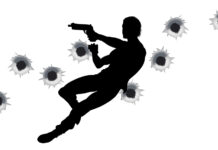





![Are Compensators Worth It? [Video]](https://preparedgunowners.com/wp-content/uploads/2025/07/Depositphotos_815431992_S-218x150.jpg)


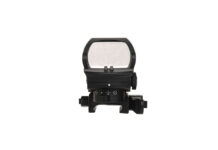

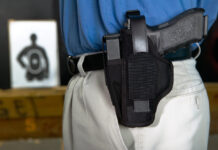
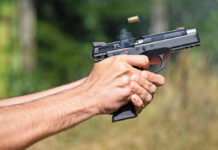
![Would-Be Robber Takes The Tueller Drill Challenge [Video]](https://preparedgunowners.com/wp-content/uploads/2025/10/Depositphotos_50626839_S-218x150.jpg)
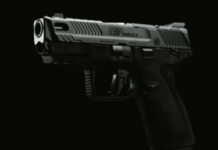
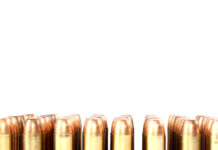
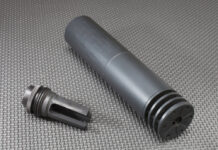
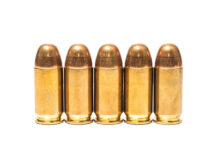

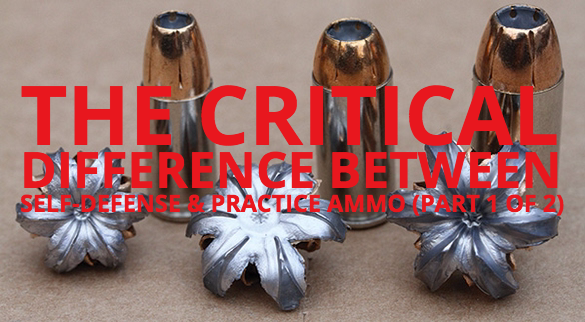


![Is This The ULTIMATE Spy Pistol? [Video]](https://preparedgunowners.com/wp-content/uploads/2023/10/Screenshot-2023-10-31-4.19.23-PM-100x70.png)







![Optic Ready vs Milled slides? [Video]](https://preparedgunowners.com/wp-content/uploads/2024/02/image-3-100x70.png)
![[Checklist] What Gear You Need To Take Pistol, Rifle & Shotgun Training Courses [Video]](https://preparedgunowners.com/wp-content/uploads/2023/07/Depositphotos_275087632_L-100x70.jpg)
![What is in Carter’s 2023 EDC? [Video]](https://preparedgunowners.com/wp-content/uploads/2023/07/Depositphotos_146856137_L-100x70.jpg)
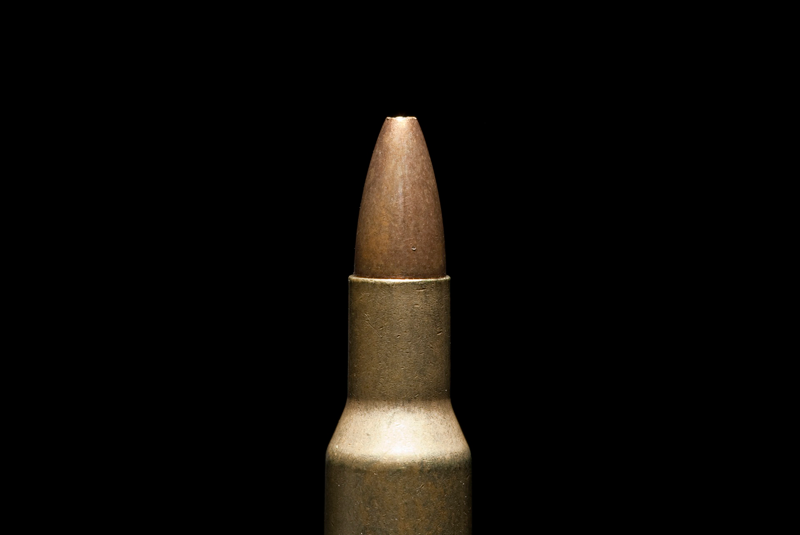
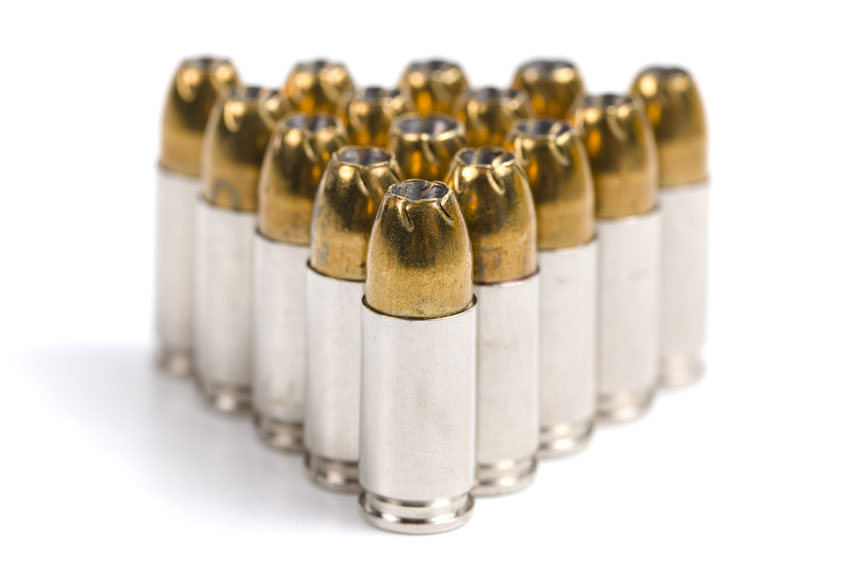
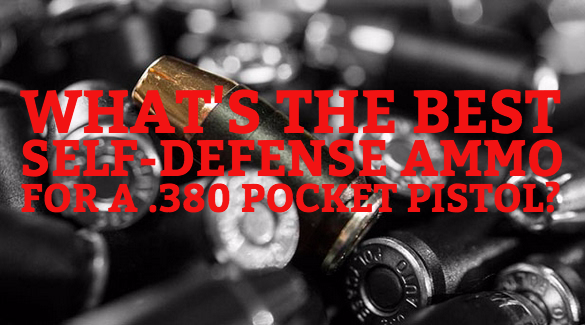
Dear Caleb:
I enjoy reading your posts and glean useful information therefrom regularly, for which I thank you.
I do, however, want to take MILD exception to two of the statements in the current article. First, I actually do shoot more naturally (smoother, faster, and more accurately) with my 45ACP (for open carry) XD-Tactical than I do with my 9MM (for concealed carry) XD-M Compact. I suspect, however, that it may have something to do with the fact that I have carried and used a 1911 for more than 40 years.
Second, terminal performance is a function of numerous variables, Among the most important of these are bullet weight, expansion, and velocity. All other things being equal (as if that were possible!) a fast moving bullet such as a .357 (magnum or SIG) can produce significantly more hydrostatic damage (i.e., shock and threat-stopping power) than a slower if heavier slug like my beloved .45 ACP, hence the effectiveness of a properly designed 5.56 or 5.7 mm round.
Make sense? Please feel free to lambaste me publicly for any errors or omissions, and thanks again for all you do!
It could definitely be the gun you’re more familiar with. Plus the “full size” vs “compact” shooting ergonomics, etc — i.e it’s easier to shoot a bigger, full size gun faster and more accurate than a compact.
To your second point — math is not my strong point but we’ll go into more depth comparing the different service caliber rounds in pt 2 of the article.
Thanks for the great comment!
Dear Caleb: I can only imagine how many pistol shooters and plinkers would agree and disagree with you. As you mentioned you prefer “9mm’s, making the 9mm, 40 S&W (a 10mm ‘short’ and the .45 ACP debate pointless”. I went to an Arizona Doctor’s site who treats a lot of Law Enforcement shootings and read several of the 180 comments. He more or less agreed with you that shot-placement and practice were more important–few can argue this. As a combat vet and firefighter in South Central Los Angeles, I’ve seen and treated many self-defense shootings over the years. Gelatin tests by the FBI don’t consider large or small bone deflections. Last I read, most pistol stops were between 9-11 feet and do happen fast. This brings me to what my Grandfather once told me about his experience in the Spanish-American War and why the Dept. of the Army decided to change their standard sidearm from the 6′ barreled .38 Special revolver to Browning’s designed 1911-released Gov’t .45ACP. Without getting into the details of how the attacking Morro tribesman would overrun US positions with 6 bullets in them, hacking Americans to death, then bleeding out later, the Army and Colt decided to choose the “heavier, slower bullet” theory which is argued to this day. Law Enforcement must consider over-penetration for obvious reasons. The FBI tried field-testing a Colt 10mm auto during the “Affirmative Action” 70’s after hiring smaller statured recruits only to find they couldn’t get back on target fast enough, I assume the same occurred with .45ACP’s. Having targets shoot back at me when the first M-16’s were jamming and malfunctioning was unforgivably unpleasant for us and getting soldiers killed. Yet another subject which books have been written about…a rifle, carbine and/or light weapon is the natural first choice in ground-combat. I’ve seen our .45ACP “Ball” ammo deflect off pith helmets and even clothing when hitting the enemy on an angle and doubt if the 9mm would make a difference within 50 feet. So this brings us full circle to hitting what we’re aiming at. I became a better pistol shot after learning how to reload; however, remain a great believer in stopping an assailant, then putting one or more round(s) in his skullcap with a 10mm and/or .45ACP which is sub-sonic and can be “silenced” much easier.
Just my two cents. 🙂
This article ALMOST has me wanting to trade in my Glock 30 for a 9mm weapon…. I do like the idea of having more than 11 rounds in my carry gun… But when you see so many folks walk into the ER with multiple hits from a 9mm,,, and as the ER guys say, they get carried in when hit by a single 45 cal….. I just can’t jump yet………
Thanks for the comment, we’ll talk more about this in part 2
Not in California. Hi-Cap mags (10+1) and so-called “Assault-Weapons” were grandfathered in as long as these semi-auto carbines/rifles were re-registered about 16 years ago and Hi-Cap mags are also illegal to buy in NYC and CA.. You best have a couple Hi-Cap 9mm’s if you want to stop a madman and his friends at 5-10 feet…inside your home. I think Ruger still makes a nice 9mm carbine which is food for thought…longer barrel…more muzzle velocity than a pistol.
!0mm’s are making a comeback. Outside CA, the 16 rd. mag is legal to buy and the cost of mags are lower than ever. It’s a high pressure cartridge and comes out of a 4″ barrel faster with more muzzle energy than a .357 Mag. and equal barrel length and bullet weight…measured personally with my chronograph at 15′. A .40 S&W is a 10mm short , but uses the small pistol primer…both fire .40 cal. bullets., but the 10’s case is a bit longer and can hold more powder. .40 S&W’s came about most likely due to the heavier recoil of it’s father, the 10mm. Both headspace at the case-mouth. If reloading, keep your generations of empty brass separated and don’t shoot leaded bullets from any Glock pistol. I replaced my Glock Model 20’s barrel with a 6″ stainless Bar-Sto and all steel/heavier recoil spring/guide rod. I’ve never had a jam and it’s a powerhouse. For legal reasons, I shoot factory Corbon hollow-points.
Thanks Lee and much safe shooting to all.
Q: years ago I was told to one less bullet in the mag to save the spring. Is that still true? I carried a .45 on duty but preferred the 9mm for the reasons listed.
In AR-15 mags, I still go with 28 rounds in a 30-rounder … not worried about “saving” the spring but it’s A.) easier to insert into a closed bolt and B.) for reliability. Many now say that Magpul and other modern 30-rounders are so reliable you can load the full 30 and be fine. I still do 28 simply because the loss of 2 out of 30 rounds doesn’t bother me that much.
On the other hand, my Glock 19 I carry with the full 15 in the magazine capacity + 1 in the chamber and a spare Glock 17 mag with 17 full rounds … I’ve heard at least one person say to download Glock mags by one, but I don’t do it as I consider the capacity more important and I’ve never had an issue with the Glock I would contribute to having a full magazine (my Glock has at least 6,000 rounds through it).
Again, I don’t believe the “saving the spring” thing — and would keep mags loaded in storage and not worry about it as well.
Do you put your car on jack stands to save its springs?
I am a fortunate CCW that does not have ‘real world experience,’ and hope to never have. When I carry, it is for a rare and unexpected need, so I use easiest to carry, thinking, and demonstrating, if I carry the most comfortable, I WILL carry the most comfortable instead of leaving it home. I formerly thought a 22LR was better than not carrying, but after hearing the ‘starts with a 4 mantra’ I must accept the fact I am, and will continue to be, underpowered, but STILL better prepared than if don’t, or rarely, carry. I bought a new-fangled plastic gun, and found there is little that ‘CARRIES a 2, or 3, or 4’ means, if compared to ‘PRACTICES with,’ as Mr Lee wisely said elsewhere. Since we aren’t all the same, whatever works for me, is also best for me.
(PS – unSAFE-act-blue-state-NYer, so mag capacity isn’t important when limited by unConstitutional statute, but we’re still working to change it)
A gun in the hand is truly better than nothing. It’s still a force multiplier.
Caleb, excellent thoughts and summation, but one point: As we know from police reports (this doesn’t count the military – another dynamic altogether IMHO), most gunfights happen within 7yds. Shot placement is all, so it comes down to this: If you can shoot inside the T, that is the brain bucket or along that access from the head to mid chest which then pushes against the central nervous system, then any JHP will do, provided that it should be +P to penetrate clothing and not exit to hit someone behind (if one does not hit exposed flesh – neck/brain bucket). More shots are better for more chances to hit center mass and, more importantly, the T. That said, if one does not hit center mass or the T, it stands to reason that a larger round with more mass can at least “delay” a perp for shot follow-up, especially a perp drugged-up; hence, the reasoning for the .45 development for the Moros insurrection in the PI back in the early 1900’s: .38 just couldn’t stop them (taking into account that they were FMJ vice JHP). Those boys were higher than Cooter Brown, just like Al-Qaeda and ISIS. So, I think it prudent to also ask where one is going and to what possible threats they may encounter. Like the rest of us, we all wrestle with this. I am a volunteer for a Church security group (includes retired SOF and LEO), and we have all agreed that for our mission set which may include many by-standers, a JHP in 9mm+P is probably the way to go. The +P added velocity ensures penetration for clothed persons while JHP ensures (to some degree) over-penetration/exit to by-standers. If the military would simply realize that we are not fighting signatories to the Geneva Convention, and go to 9mm+P JHP, there would not be a debate over the need for higher caliber, etc. Anyway, keep up the great work – really enjoy your articles as they all make us reassess and think! GOD Bless.
That’s really interesting Sandy given your experience and the points you brought up. I agree that JHP, preferably +P is adequate …
Also all your points about shot placement are completely accurate. Outside of that, the other benefits of the 9mm (for me) completely outweigh the idea that a larger round might “delay” a perp for a followup shot. Thanks for your comment and that’s some interesting history on the .45 I didn’t know about.
I have also carried a 1911 45acp for decades. When I first went onto the police work in 1974, the only caliber we could carry was the 38 special. After a few years we graduated to the 9mm. I carried a 1911 off duty and eventually we were allowed to carry them on duty. The biggest problem I have with your theory is not every round from every caliber, will expand every time. As the round goes through clothing for instance, if the hollow point fills with clothing, it may not expand uniformly. The 45, even if it doesn’t expand, is still .45 caliber, and a 9mm is still about .38 caliber. Yes, most 9mm’s hold more rounds then most 45’s. But if I needed more then the 3 mags I always carry, I should have been carrying a shotgun or black rifle. My last 20 years on the police department was in proactive investigations. I always carried my weapon in a horizontal shoulder holster, with two spare mags. In the good weather (most of the time in So. CA, a Hawaiian shirt offered perfect concealment. If the Hawaiian shirt didn’t fit the bill, a vest was perfect. I spent a lot time in a vehicle on surveillance. There is no faster way to deploy a weapon from a seated position. To this day, I still carry my shoulder holster and my 45acp, although now living in the mountains of Central Utah, the concealment is more often a jacket.
You obviously have more experience than I do carrying, but I’ve always heard that about shoulder holsters being great for seated positions (executive protection or stakeout work in/around vehicles, etc)
And yes, you’re right that not all rounds always expand, every single time, but as I’ll explain in part 2 — I simply trust today’s modern ammo to do what it’s supposed to do — great point though about under-expansion.
I’ll look forward to part 2. Thanks for putting this info out there.
Thank you Caleb, for the information you provide in your articles.
I have never had to use my carry gun ( and hope to never have to). When I buy ammo, I try to save up and buy bulk (a thousand rounds a pop). I carry either a Glock 19 Gen 4 or Glock 26 gen 4, stocked with 135gr Hornady Critical Duty. For practice, I typically use 124gr FMJ. I have been using Freedom Munitions for my practice ammo. It has gone bang every time and is more accurate than I can wring out of it in the 19. I go to the range twice a month and go through 200-300 rounds each time.
My carry ammo, I fired 300 rounds out of my G17, G19, and G26 to ensure it feed and didn’t have issues. I replace my carry ammo once a year, so I buy 500 rounds of carry a year and 4 cases of practice. I rotate my ammo stock and keep a half case of carry and a case of practice at home all the time.
William,
Sounds like you’re doing it exactly right then! That’s a great method you got going on …
If I remember correctly the .45 round was invented for the U.S. Army. To take down the drugged up Morro tribe fighters .If that round was good , then, it’s good enough for me NOW!!! I like your write up,it gives every body food for thought.
Thanks for the comment! As I said, and will cover more thoroughly in part 2, modern self defense ammo has come a LONG way in just the past 20 years … it’s come a long, LONG way since 1911 🙂
As an individual, this CCW person is, from what I can determine, somewhat unique.
First, I have successfully used my legally carried firearm for defense for me and my spouse, in the course of an attempted armed robbery.
Second, I am very well educated, as well as being retired military of considerable rank. During my time in the military, I learned the 1911 pistol, the M9 pistol, the AR-15/M-16/M-4 rifle, the S&W revolver, and the combat shotgun. I had access to another active person who had been assigned to AMU and taught me a good number of things. I learned a good deal from qualified individuals in many aspects of firearms, and learned not only to handload but to cast my own bullets in linotype for magnum calibers with no appreciable barrel leading.
As one respondent stated, .45ACP dominates comparisons because of the need to use FMJ bullets as a result of the Hague and Geneva conventions– i.e., no load showing. The US military will not permit use of cartridges with visible lead. The 9mm rounds issued to our troops are not felt to be as effective when they are made with FMJ bullets.
Those of us with military time feel more confident with .45ACP for this reason. Those of us with significant military experience, as a result, believe in .45ACP, for this reason. It is doubtful that the forever ongoing debate of .45ACP vs 9mm will ever cease.
Thank you for your comments and glad you have successfully defended yourself and your spouse! As for FMJ vs JHP — there’s no comparison — the JHP is so much better … I could see why the bigger is better is a factor there. But with modern projectiles, aka JHP, there’s so little difference between service pistol handgun calibers now.
If you want real stopping power from a hand gun try the Glock 10mm. Yes it takes a little bit getting use to but I think it’s worth the practice on the range to be abel to stop anyone with a single shot!!!!
Interesting article, but I do have a disagreement with you. Police did NOT trade “Worn out” weapons. By and large they traded in great weapons that had hardly been broken in for new pistols. As a dealer I ordered several Glock 17’s with night sites from a distributor. These were NOT refurbished weapons. Each box was marked with the officers name it came from on the Springfield Mo. force. All but one were really pristine. That one was worn out. Not only worn out but had also been re-barreled. It had belonged to a woman officer. So I would laughingly tell people that if you were facing a male police officer in Springfield you might not have to worry, but there was clearly a woman on that force who could shoot. ANYONE who wore out two Glocks sure as heck had put in one hell of a lot of practice. And by the way the same has been true of other “cop” guns I have purchased. Unfortunately, from the evidence of those used guns, MOST officers simply do NOT practice enough to be truly proficient with their weapons. Sad but true!!!
I’ve heard this too. That police “trade in” guns are usually a great deal if you’re looking for “used guns” because while they may have a lot of wear and tear on the outside (from the holster, carrying daily, etc) the internals and barrel are usually pristine from lack of use.
… And now we know why statistically LEO of all kinds miss about 80% of the shots they fire, lol
9mm= the perfect culmination of size, controllability, reliability, capacity, lethality, and affordability
@MrApple: wow someone who agrees! lol 🙂
I prefer 9mm, and I also have a 9mm carbine lets me shoot the same ammo in both. Hollow points for defense and FMJ for target. Hollow points are so much more expensive, and can’t seem to find any bullets for reloading. Hollow point bullet mold prices are astronomical, and for what reason?
If bullet tech for the 9mm has gotten so much better since the 90’s wouldn’t that mean that the same is true for all other calibers? If so, bullet tech for the 45acp would be improved equal to 9mm.
My opinion is that 45acp is a larger bullet with more weight means more stopping power. Add in the new hollow point tech and the only real advantage is price.
@ Patrick: price per practice round (since self defense ammo is always expensive no matter the caliber), easier-to-shoot, and higher capacity in the same size gun.
this is only my opinion, bigger is better and will always be. Para Ordnance builds a 1911 double stack with 14 rounds 45acp, called para 14/45. Kimber also built a double stack called BP Ten II. Both are very nice guns. So the only difference is price per round and and recoil. With practice recoil is managable for anyone especially a big guy like me.
I dont dispute the fact that an officer unloaded 14 rounds into a perp but it is not the norm, but an oddity. ballistic gell shows the difference in the wound trac. rule of thumb is use the largest cal you can manage not based on ammo price. I dont to bet my life on 9mm because it is cheaper to shoot.
great write up BTY, looking foward to your next email
Shooters trying to convince each other which is the “best” ammo is like bikers trying to convince each other which is the “best” bike.
A hard core Harley rider commenting on my Honda summed it up this way: ” It’s not so important WHAT you ride; it’s important THAT you ride.”
Same goes for shootin’….just get out there and do it !!
Shooters trying to convince each other which is the “best” ammo is like bikers trying to convince each other which is the “best” bike.
Years ago, a hard core Harley rider commenting on my Honda summed it up this way: ” It’s not so important WHAT you ride; it’s important THAT you ride.”
Same goes for shootin’….just get out there and do it !!
The story I have always heard about why the .40S&W was almost universally adopted by police departments is that the 9mm could not meet the new FBI protocol. That is why the FBI adopted the 10mm. The problem with the 10mm is that many agents, especially women and others with small hands, could not handle the massive recoil. So Smith & Wesson developed the .40S&W. It met the FBI protocol without the massive recoil. Once the FBI adopted the .40S&W, police departments followed suit. The reason the FBI has now gone back to the 9mm is that the new modern rounds now meet their protocol (and the magazine capacity is greater and the recoil is lower). And now that the FBI is going back to the 9mm, departments all across the country will once again follow their lead. Caleb, is this not a more accurate description of the chain of events than the AWB example you used?
@JimmyC:
I have never heard that …
Not saying it’s not true.
But the info about the AWB playing into the .40 popularity, I know is true, as it’s from an industry insider who worked for both Berretta and Sig at one point …
yes the AWB story is true but to a very minor degree. The story of Jimmy C is profoundly well documented. One shot stops of the 40 S&W is dramatically better than the 9mm including +P loads, and I will trust this much more than ballistic gelatin. What you have to understand about government agencies they require a consistently repeatable test, like gelatin, that THEORETICALLY reflects the effectiveness of stopping an attacker. They don’t really care if it is accurate, they care if it justifies their decisions. Take it from a long time government employee. I have seen the effect of both 40 and 9s in deer and it isn’t even close. For me, for whatever reason, I grew up shooting 357 and mostly 44 magnum, so maybe I just shoot hot loads better, I shoot 40s much more accurately. But I won’t argue that extra bullets may outweigh my argument. But you people who say 9 equals 40 effects on tissue are repeating what others have said, and don’t have experience with the actual terminal effects of the bullet on tissue.
[…] The CRITICAL difference between self-defense & practice ammo. – Home Guns The CRITICAL difference between self-defense & practice ammo. price per practice round (since self defense ammo is always expensive no matter the caliber. […]
[…] The CRITICAL difference between self-defense & practice ammo. – Apr 21, 2015. Why modern ammo makes the 9mm, 40 S&W,45 ACP debate pointless. When we talk about guns and self-defense ammo we want the best. […]
[…] The CRITICAL difference between self-defense & practice ammo. – Apr 21, 2015. When we talk about guns and self-defense ammo we want the best. difference between any type of ammo fed through my Glock 19 Gen 4. […]
[…] The CRITICAL difference between self-defense & practice ammo. – Apr 21, 2015. When we talk about guns and self-defense ammo we want the best. difference between any type of ammo fed through my Glock 19 Gen 4. […]
I really enjoyed reading this article and the comments. NOW Caleb, Tell us when Part 2 of his article will be out please.
Daniel!
Part 2:
https://preparedgunowners.com/2015/04/23/more-on-self-defense-ammo-why-the-fbi-is-switching-back-to-9mm-part-2-of-3/
And part 3:
https://preparedgunowners.com/2015/04/28/the-approved-list-of-self-defense-ammunition-is-your-ammo-on-this-list-pt-3-of-3/
Comments are closed.